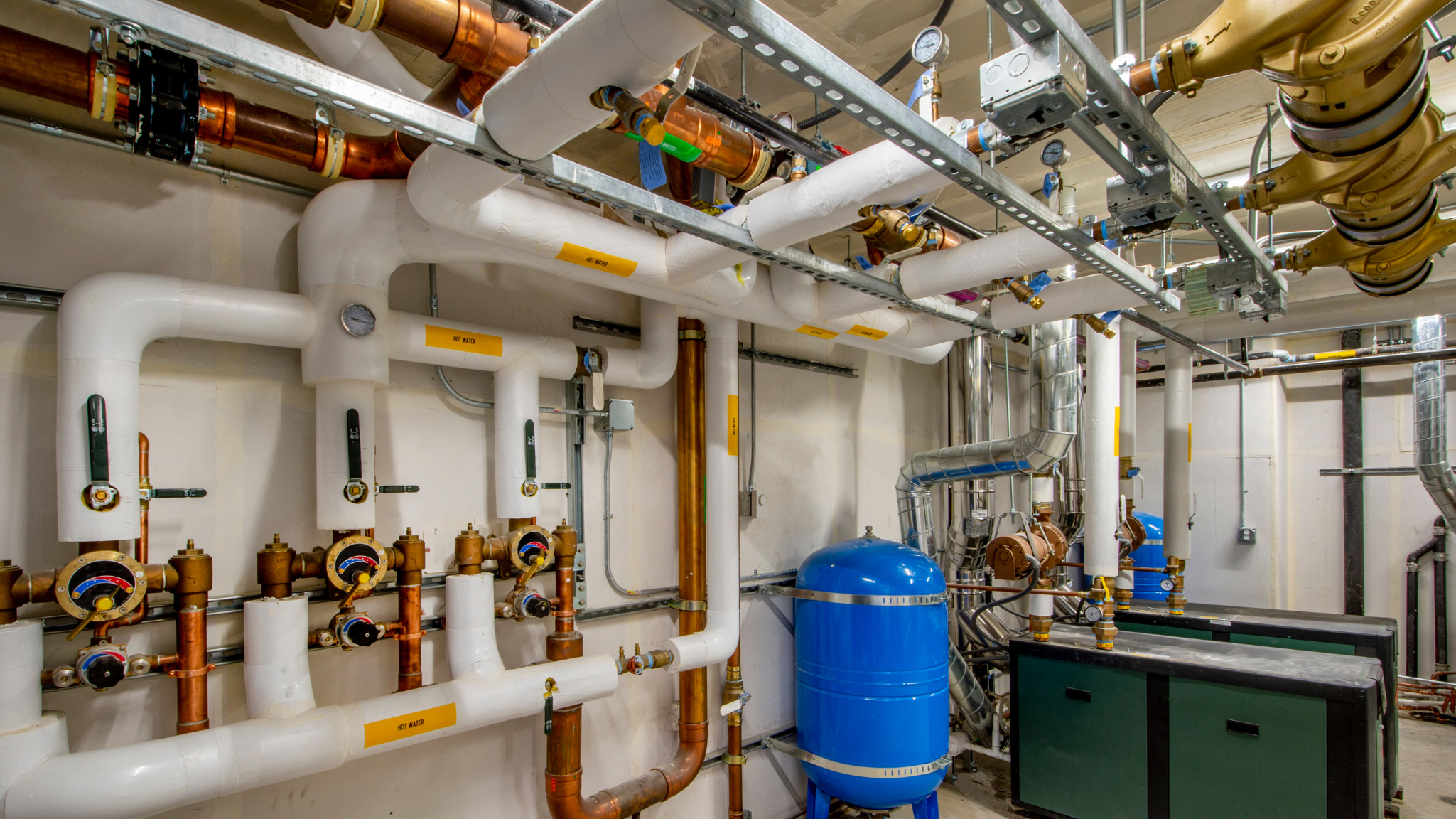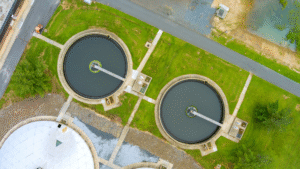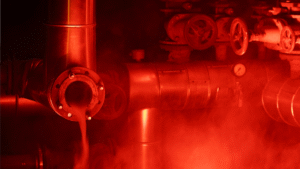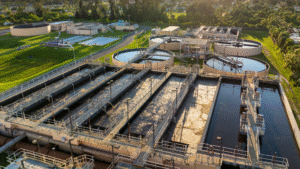In industrial applications, maintaining efficient and clean closed loop systems is essential to performance, reliability, and cost control. A closed loop control system recirculates water or another process fluid through a sealed network of pipes, transferring heat without exposing the fluid to external contaminants. Unlike an open loop system, this design limits evaporation and reduces chemical losses, helping facilities maintain temperature stability and mechanical integrity.
However, even in a contained environment, closed loops face persistent threats such as corrosion, scaling, and microbial growth. The balance of chemistry within the control system determines whether these problems appear or stay under control. Without consistent chemical management, deposits and biological fouling can quickly impair heat transfer and damage equipment.
This is where microbiological control and custom chemical blending become critical. By optimizing treatment chemistry to the exact system parameters, operators can stabilize performance, reduce unplanned maintenance, and extend equipment life. Through careful adjustment of inhibitors, biocides, and pH stabilizers, water treatment specialists create a responsive system that continuously supports the desired state — clean, efficient, and self-sustaining. In this article, we explore how custom blending supports clean, long-lasting closed-loop performance in industrial environments.
Understanding Closed-Loop Systems
A closed loop control system operates on a simple principle: constant adjustment based on feedback. In water treatment and other industrial applications, this means the system continually monitors conditions such as temperature, flow rate, or water chemistry, then automatically corrects any deviation from the desired output. This continuous regulation is what distinguishes a closed-loop approach from an open loop system, which relies on manual intervention and cannot respond dynamically.
At its core, a feedback control system receives a reference input, such as a target temperature or pH level. Sensors measure the actual output, compare it with the set point, and generate an error signal. That signal is sent through the feedback path to a controller, which adjusts pumps, valves, or chemical dosing mechanisms. The result is a control loop that fine-tunes itself until the desired response is reached.
A familiar example of this principle is a home thermostat, which measures the current air temperature and cycles the furnace or chiller on and off to maintain comfort. A cruise control system in a car performs the same function, comparing actual speed to the set speed and adjusting throttle automatically. In both cases, the feedback loop reduces errors and ensures stability without constant human interaction.
In water systems, this concept extends beyond electronics. The chemistry within a closed loop behaves like a feedback controller that regulates corrosion potential, microbial activity, and scaling. When properly managed, the system automatically achieves its desired state—clean, balanced, and energy-efficient—proving why closed-loop design is so widely used across industries.
Also read: What is a Closed Loop System and Why Does it Need Multi-Function Products
The Role of Chemistry in Clean System Performance
Clean and stable closed loop systems rely on chemistry just as much as they depend on mechanical design. Every element within the system—from the piping and pumps to the fluid itself—interacts in a way that determines how well the system performs. Effective microbiological control and corrosion prevention are rooted in the ability to manage these chemical interactions continuously and precisely.
Chemistry as the System’s Regulating Force
In a closed loop control system, chemistry operates like a feedback controller. It continuously responds to changes in pH, alkalinity, conductivity, and inhibitor levels, keeping the system output aligned with the desired output. When the chemistry is balanced, water quality stabilizes and the process maintains equilibrium without constant adjustment. The input signal is the untreated water or new makeup water introduced into the system. The controller output is the measured chemical dosing applied to bring that water into alignment with system standards. Regular testing provides the feedback signals that guide these adjustments. When all these actions remain balanced, the system sustains a clean, consistent performance.
Consequences of Chemical Imbalance
When chemistry drifts outside its set point, performance problems begin to multiply. Corrosion develops as oxygen infiltrates untreated water, while high mineral concentrations lead to scaling on heat transfer surfaces. Biofilm and microbiological fouling further restrict flow and heat exchange, creating the potential for costly shutdowns. These problems disrupt the desired state of the loop, increasing energy consumption and maintenance time.
Stabilizing System Chemistry through Custom Blending
Custom chemical blending provides the precision required to keep closed loop systems in balance. Tailored inhibitors, pH buffers, and biocides are formulated to match the system’s specific materials, temperature range, and operating environment. When optimized, this chemistry acts as a responsive feedback control mechanism, continuously protecting the loop and extending equipment life. By managing water chemistry as an active part of the control system, operators transform a basic closed loop into a highly efficient, self-correcting process.
Why Custom Blending Matters
No two closed loop control environments are identical. Differences in system design, operating temperature, metallurgy, and water composition mean that standard formulations often fall short. Custom blending is the process of tailoring chemical treatments to the specific needs of each control system, ensuring that the chemistry aligns with the unique conditions of the process. This approach allows operators to reduce errors, stabilize water quality, and maintain consistent efficiency across the whole system.
A complex system such as a cooling or heating closed loop system must meet multiple system parameters simultaneously. Custom chemical blending helps facilities reach their desired output by addressing several interrelated factors:
- Metal composition: Each system’s metals—steel, copper, or aluminum—react differently to water and treatment agents. Custom inhibitors are formulated to protect specific alloys and minimize galvanic corrosion.
- Temperature range: In systems monitored by a temperature sensor, changes in current air temperature and operating load affect water chemistry. Blended glycols and stabilizers help maintain consistent thermal performance.
- Flow and velocity: Varying flow rates influence inhibitor film persistence and microbial activity. Blends can be optimized to handle these variations.
- Water hardness and conductivity: Mineral balance affects scaling and fouling potential, requiring precise adjustment of dispersants and pH buffers.
- Regional environment: Facilities in Pennsylvania and Ohio face seasonal freeze–thaw conditions, making inhibited glycol blends an essential part of ETI’s formulations.
Through these customized adjustments, the blended chemistry functions as part of the feedback system, responding to real-time operational shifts. The control loops within the closed loop control system become more stable and automatically regulate the chemical balance. In turn, operators experience cleaner surfaces, fewer shutdowns, and extended equipment life.
Microbiological Control: The Key to System Longevity
The greatest threat to a clean, efficient closed loop system often comes from what cannot be seen. Even in sealed environments, microorganisms can infiltrate through makeup water, air leaks, or maintenance activities. Once present, these bacteria and algae multiply quickly, forming biofilms that clog heat exchangers, restrict flow, and accelerate corrosion. Effective microbiological control is therefore essential to maintaining performance and extending the life of critical equipment.
Understanding Microbiological Growth in Closed Loops
Microbial populations in closed loop control systems thrive wherever nutrients, low flow, and favorable temperature align. As colonies develop, they release organic acids that lower pH and compromise protective inhibitor films. This creates a self-reinforcing cycle, similar to a positive feedback pattern in a feedback system, where the unwanted activity amplifies itself until mechanical or chemical failure occurs. Without intervention, the loop’s desired output condition—clean, stable water—becomes increasingly difficult to maintain.
The Role of Chemistry in Microbiological Control
Custom chemistry plays a direct role in biological management. ETI’s blended biocides and inhibitors are formulated to disrupt microbial metabolism and prevent adhesion to surfaces. These formulations act as the controller output within the water treatment feedback control system, continuously responding to feedback signals such as bacterial counts, conductivity, and corrosion rates. By aligning treatment with measured conditions, the loop remains within its desired state while preserving thermal efficiency.
Automated Feedback and Long-Term Stability
In modern control systems, chemical dosing can be tied to sensors and automated controllers that regulate concentration levels based on system performance data. This approach mimics the logic of a fully automatic control system, using a feedback loop to maintain balance with minimal human interaction. Through proactive microbiological control and real-time feedback, closed loops remain clean, predictable, and capable of sustaining long-term operation in demanding industrial applications.
ETI’s Role in Supporting Clean Closed-Loop Operations
For nearly four decades, ETI has helped facilities maintain efficient and clean closed loop systems through precision chemical engineering and custom formulation. Our focus is on developing chemistry that functions as part of the feedback control process—continuously regulating water chemistry, reducing corrosion, and ensuring reliable microbiological control across industrial applications.
Biocides: Targeted Microbiological Control
ETI’s Biocides program features over 35 formulations, including oxidizers, non-oxidizers, and dual-active chemistries. As a trusted distributor for multiple microbiocide manufacturers, ETI offers both private-labeled and manufacturer-branded options.
Our biocides are formulated to:
- Prevent and eliminate microbial growth and biofilm formation.
- Support optimal water quality in cooling, process, and closed-loop environments.
- Maintain compatibility with varying metallurgy and system parameters.
ETI also provides microbial control test kits such as the Glutatect WT and HMB X System, enabling on-site measurement of residual biocides and biofilm activity for proactive system management.
Alkalinity Boosters and Oxygen Scavengers
Our Alkalinity Boosters stabilize pH and reinforce corrosion-inhibitor performance, creating the ideal environment for biocides to function effectively. Proper alkalinity reduces corrosion risk, supports stable control loops, and prevents fluctuations that compromise treatment efficiency.
Meanwhile, our Oxygen Scavengers for Boilers protect against pitting and oxidation by removing dissolved oxygen from feedwater. These treatments extend system life and preserve desired output conditions in both high- and low-pressure environments.
Custom Blending and Formulations
ETI’s Custom Blending and Formulations service integrates decades of water treatment expertise with ISO 9001-certified quality standards. Our chemists and microbiologists design treatment programs that align precisely with each client’s metallurgy, temperature range, and operating requirements.
This ensures that every chemical program—whether for biological control, pH management, or corrosion inhibition—works as a unified control action within the closed loop control system.
Conclusion
Keeping closed loop systems clean, stable, and efficient requires more than standard chemistry—it demands a precise balance of treatment, monitoring, and microbiological control. ETI’s expertise in custom blending, biocides, alkalinity management, and oxygen scavenging ensures that every system maintains its desired state with consistency and reliability.
Through innovative formulations and decades of technical experience, ETI supports operators, distributors, and service professionals in achieving cleaner, longer-lasting systems that perform as designed.
To discuss how ETI can help optimize your closed-loop or boiler water treatment program, contact our team today or call 610-286-2010 to speak directly with a water treatment specialist.
Frequently Asked Questions (FAQs)
What is the difference between an open loop system and a closed loop control system?
An open loop control system operates without feedback—it follows preset instructions regardless of the actual condition or output. In contrast, a closed loop control system constantly measures its system output, compares it to the desired output, and adjusts automatically. Such systems are widely used in industrial water treatment, HVAC, and even nuclear power plants for precise process regulation.
How does a closed loop feedback system work?
In a feedback control system, a reference input defines the set point or target condition. Sensors measure the output signal, calculate the error signal, and send it through a feedback path to the controller. The controller output then modifies the system input until the desired response is achieved.
What is the closed loop transfer function?
The closed loop transfer function expresses the mathematical relationship between the input signal and output signal of the control system. It defines how efficiently the system can reduce errors and maintain control under variable conditions.
Where else are closed loop control systems used?
Beyond water treatment, feedback control and open loop control concepts appear in electronic devices, automotive cruise control, and energy systems, where temperature, speed, and signal stability must be precisely controlled.





